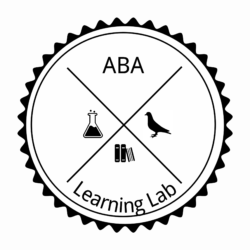Brian Kaminski, RBT, Graduate Student of Behavior Analysis
Featured on briankaminski.org
If practitioners and recipients of behavior analytic services in autism intervention were to be asked the question “How would you define a ‘successful’ behavior analyst?”, the majority would likely answer: client outcomes – to what degree do they enact meaningful change in the lives of those they serve.
The next logical question might then be, “What are the biggest contributing factors that influence client success?”
A behavior analyst would be quick to assert that there are many confounding variables that effect client progress: parental involvement, educational setting, environmental factors, and individual learning history.
While behavior analysts are experts in manipulating contingencies that maintain behavior, there are limitations to which factors they can adequately address. For that reason, I would assert that the strength of a behavior analyst is inseparably linked to the behavioral therapists they supervise – those individuals with the most instructional exposure with their clients in an applied setting.
As a first-year graduate student pursuing my BCBA and a registered behavioral technician (RBT) of several years, I have had the great fortune of working with countless BCBAs of varying educational and professional backgrounds.
I have always maintained a keen eye to individual practice differences among behavior analysts and tried to consider which I would choose to adopt when I too share that credential.
Below are some of the characteristics of those I would deem to be an “exceptional” BCBA. These are the qualities they possess that enable therapists such as myself to perform our jobs at a high level – yielding greater client outcomes and happier families.
1) Strong Communicators – This point almost seems too basic to include, but it cannot be emphasized enough: the health of any relationship hinges upon frequent and open communication – that of a behavior analyst and RBT is no different.
A string of unreturned messages on the part of a BCBA can extinguish future attempts of communication and put a damper on rapport. In spite their large caseloads, behavior analysts should still strive to abide by the “24-hour rule” when it comes to professional communication.
2) Models of Professional Behavior – Just as their clients, behavioral therapists learn by modeling. Some lessons are not always black and white – how to address an ethical violation, how to communicate with an upset parent, or how to discipline a staff member. These instances require the careful and deliberate actions of an experienced professional. A behavior analyst should always remain mindful that their behaviors and attitudes set a precedence for those they supervise.
By the same token, a behavior analyst who is willing to address their own mistakes gains far more credibility than those who try to maintain an air of superiority. In each instance, the onus is on accountability, not perfection.
Furthermore, it affords their staff the same ability to learn from their own mistakes. In my own career, I have made no shortage of well-intentioned gaffs that became opportunities for professional development following corrective feedback.
3) Enable Autonomy – I once overheard the following exchange between a new behavior consultant and their therapist. A question was posed about how to intervene during a client’s challenging behavior, to which the behavior consultant replied, “The nice thing about your job is that you really don’t have to think. Just follow the behavior plan.”
While I am sure this well-intentioned behavior consultant didn’t intend to be slighting with their response, how would a comment such as that affect your job satisfaction? Not only was it a poor choice of words, but it also completely flies in the face of the core tenets of behavior analysis. Put best by Dr. Robert K. Ross, BCBA-D at a conference I recently attended, “ABA is not simply a set of ‘procedures.’ It is a scientific approach to behavior.”
While the comments made by this consultant could simply be chalked up to inexperience, I think it spoke to a greater phenomenon which separates the “good” from “great” behavior analyst: those who teach for compliance and rote responding versus those who teach for generalization and critical thinking.
The best BCBAs I have worked with have taught me not only the “How’s,” but also the “Why’s.” This strong foundation in the principles of behavior have allowed me to make critical decisions in situations when a supervisor was not immediately available to provide instruction.
Finally, these behavior analysts were also receptive to my own feedback and gave me a voice in treatment interventions. Such a practice fosters “buy-in” on the part of the therapist and cultivates a team approach to therapy. As I can imagine B.F. Skinner saying, “Two organisms are better than one.”
4) Frequent Reinforcers – Really simple: Reinforce early and often. The behavior analysts whom I most enjoyed working with operated with a very “dense schedule” of reinforcement. Never underestimate the power of verbal praise. These were the behavior analysts I would enjoy going the extra mile for because I felt like my contributions were both noticed and appreciated. Happy Therapist = Happy Client = Happy Life.
5) Serve as Mentors – The last characteristic of a truly exceptional behavior analyst is their willingness to serve as mentors to junior colleagues. I will be forever grateful to those BCBAs in my own career who have served as mentors and advanced my understanding and application of behavior analysis. While such a responsibility requires a considerably greater response effort on the part of the BCBA, the satisfaction of inspiring the next of wave of behavior analysts makes the endeavor more than worthwhile.
In order to “Save the World with Behavior Analysis,” it is going to take a growing community of passionate, proficient BCBAs. As you reflect upon your own professional practice, keep in mind – you may be inspiring the next generation of behavior analysts.

